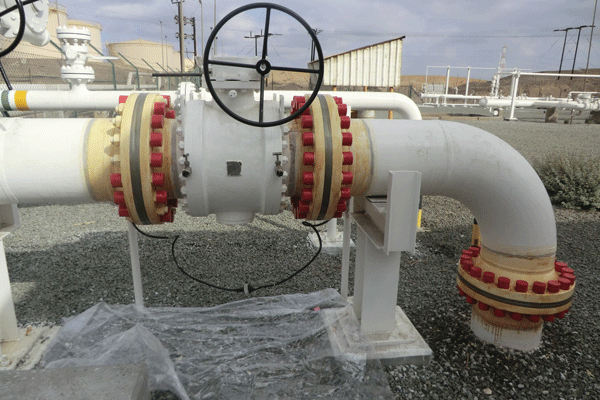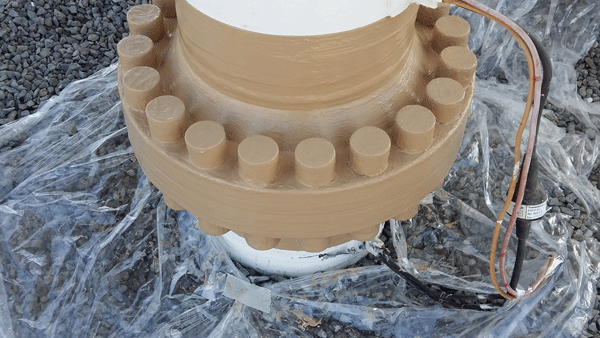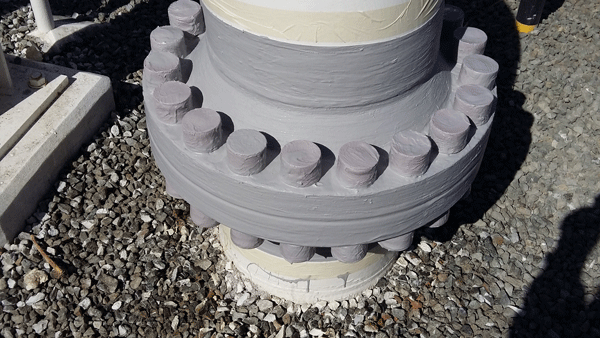Over the years, the repair and maintenance industry has employed many different techniques to combat the problem of flange corrosion. Conventional paints, mechanical covers and clamps, polymer tapes, hot-melt thermoplastics, and polymer bags with volatile corrosion inhibitors (VCIs) all offer solutions to protect flanges from corrosion. Some of these techniques, however, may fail to provide the level of corrosion resistance required to successfully protect flanges and pipework within harsh environments.
A gas supplier in Oman sought an alternative solution for over 500 flanges on the site and decided to use a two-part hybrid polymer encapsulating membrane system from Belzona Polymerics, Ltd. to protect the flanges against corrosion. This flexible and peelable coating was chosen because it would completely encapsulate the flanges, regardless of their size or shape, and protect them from moisture as well as crevice, galvanic, and atmospheric corrosion. When used in conjunction with a corrosion inhibitor base coat, the cold-applied brush system will successfully fortify the flanges with long-term corrosion protection. In terms of inspection, this solvent-free coating can be cut and peeled back to allow access to fasteners. Upon completion of the maintenance work, the membrane can be reinstated with the application of an additional layer of material.
Applying the Membrane
To apply the membrane, the flange surfaces were first cleaned with a cleaner/degreaser and then thoroughly abraded with abrasive paper to remove any gloss. Once surface preparation was completed, the bond area was degreased again. To seal the gap between the flange faces, a strip of instant bridging tape was used. Masking tape was applied over the two bond areas to protect these sections of pipe from accidental overspray of the corrosion inhibitor base layer.

The corrosion inhibitor was then applied to the flange, pipe, and fasteners with even and complete film coverage. Once the corrosion inhibitor was dry to the touch (after one hour), the masking tape was removed and plastic caps were fitted over the nuts and bolts.
A strip of reinforcement sheet was applied to bridge the gap between the flange faces and two strips were applied to the bond area. The encapsulating membrane was mixed; and using a short- bristled brush, the material was applied over the area to be protected at a thickness between 30 and 40 mils (762 and 1,016 µm).

To add strength to the system, reinforcement sheet strips were embedded into the first layer of the wet encapsulating membrane around the flange circumference and at both ends of the repair where it bonded to the pipe.

Once the first coat had cured after one hour, the second coat of the membrane was mixed and applied at the same thickness as the first coat.
The cold-applied encapsulating membrane system was applied to 520 flanges with different shapes and configurations in 45 days. A simple inspection of the flange by the company’s maintenance staff can be done by cutting the membrane system at the flanged joint and peeling it back. The maintenance staff can also reseal the system by adding an additional layer of the encapsulating membrane.